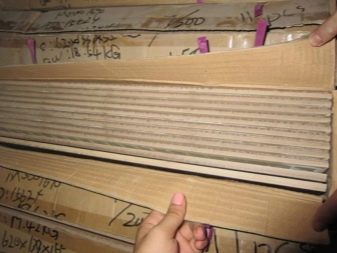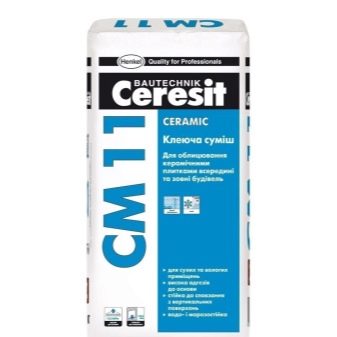Tile size 20 by 30: subtleties of choice

When planning a repair, one has to face the problem of choosing a facing material, the dimensions of which play an important role. So, the dimensions of ceramic tiles are especially important, buyers are often interested in the 20x30 cm variety, so in this article we will deal with the intricacies of choosing a cladding material of this size.


Features and characteristics
This tile size is one of the standard and widespread today. It allows you to significantly simplify surface finishing: large varieties are more difficult to glue due to their weight.
Cutting of the material is also important: the parameter of a fragment of 20 by 30 cm is convenient because in most cases there are not many residues left during cutting. This allows you to significantly save on the purchase of material, even taking into account the additional percentage for possible rejects during transportation and pruning.


The characteristics of the facing material depend on the type of tile. Due to the demand for size, modern trademarks offer the attention of the buyer wall and floor cladding. The wall view is complemented by a border.
The difference in purpose is explained by the thickness of the fragments and the level of the maximum permissible weight and mechanical load. Externally, floor tiles are thicker.
If the variety has no glaze, it is thinner.


Fragments of wall ceramic tiles without glaze 20 x 30 cm in thickness are 7-9 mm. Most often they are used for lining a kitchen apron. The weight of the floor tiles is higher, which means higher abrasion resistance.
In this case, the layer thickness is 8-10 mm on average. The weight of each variety is subject to the developed GOST: for a tiled wall variety, it is 12-14 kg per square meter. Glazed floor tiles measuring 200x300 mm weigh an average of 16 kg per sq. m.



Payment
An accurate calculation will allow you to buy the exact amount of raw materials for finishing. Tiled material is considered not by the piece, but by square meters. To do this, find the area of one fragment.
The calculation is pretty simple:
- convert dimensions into meters (0.2 width, 0.3 height);
- multiply the length by the width (03, * 0.2 = 0.06 m);
- divide 1 square meter by the area of the tile (1: 0.06 = 16.66 m).


It turns out that there are 17 pieces of tiles 200x300 mm in size per 1 m2. Knowing this and the number of fragments in the box, you can calculate the total amount of facing material. To understand how much is needed in each specific case, it remains to substitute the size of the square of the required area instead of the unit. To do this, measure the length and width of the area for laying and multiply (for example, 2x4 = 8 m2, then the total consumption will be: 8: 0.06 = 133.3 or 134 fragments).


How much is in the package?
Today, the number of tiles in a package may vary. It depends on the standards of the manufacturer, taking into account the distance of transport and the thickness of the material. The thicker the identical fragments are, the smaller they are in the package.
The standards of companies in different countries differ: some brands put a larger amount of lining in the packaging, while others take care that the goods do not break during delivery to the store counter.
One box contains 24 tiles measuring 20x30 cm. This is enough for a surface treatment of 1.5 square meters. m. excluding marriage. The weight of the box is 17 kg or more.


Color solutions
Today this material is presented in a wide range. Due to this, color solutions are multifaceted.As a rule, there are no overly acidic and flashy tones among them: all tones are soft and pleasing to the eye.
The focus is on shades of pastel and natural colors. The first includes beige, milk, cream, light pink, bleached blue, diluted pistachio and olive colors.





Wood and marble textures are no less interesting. These fragments are made in brown, brick, sand, terracotta, light and dark shades of wenge oak.
The popular colors of the palette are peach, cornflower blue, emerald, mint tones. Drawings are varied: it can be the effects of aging of the surface (cracks), butterflies, sea and beach themes, curls, lace, single monograms.





Geometric prints and mosaic patterns are no less popular.
How to choose?
The choice of material depends on a number of factors.
Let's list the main ones:
- The material for wall cladding is also not intended for the floor, just as floor tiles are not suitable for walls: non-observance of this criterion will complicate the installation and reduce the durability of the coating.
- Raw materials are bought by performing a preliminary calculation, adding several pieces to the received number of fragments (in the process of work, marriage is not excluded).
- Color matters: it should fit into the overall picture of the room, without interrupting the main background of the interior.


- When choosing a picture, the size and theme are taken into account: a small print on the general background creates ripples (it is better to replace a cage, a strip, a matting with abstract stains).
- Laying the surface in a monochromatic version is good for the floor, an accent is needed for the walls: it is worth buying a companion with a pattern for the material.
- If possible, it is necessary to perform a calibration before purchasing: if the thickness and perfection of the corners leave much to be desired, this material is not suitable for work (the surface of the finished canvas may differ in level).


- Each type of raw material has its own classification, which is indicated on the package. Try to choose a product with a red mark: this tile is durable and practical.
- It makes sense to take practical material: surfaces with an interesting texture and pattern are in priority. This is not necessarily a colorful pattern: an imitation of texture (stone, brick, wood, parquet) looks better.
- Eliminate complex patterns: they get tired of the eyes. To assess the perception of the material, while in the store, put several tiles together and move away: you will see the feasibility of buying this variety.
- Buy material with glaze. It adds strength to the coating and extends the life of the material.



What else to consider?
Besides the basic criteria, it is important to think about transportation. Some companies sell material 200 x 300 mm per piece. In other stores, each box is opened for quality control. This breaks the packaging and complicates delivery. Taking material home without tight winding is fraught with the fact that corners can break off.
In some large stores, a separate table with packaging raw materials is provided so that the buyer can independently pack the finishing material. It is worth taking advantage of this: it will save the fragments from chips during delivery.

Do not try to put more tiles in the box: as long as the material is not glued to the surface with tile glue, it can chip the corners. This is especially true for wall decoration. Rough handling and loose self-packing can cause one piece to scratch the face of another, increasing the percentage of defective parts and complicating installation.
If several boxes are purchased, it is preferable to carry them without stacking one on top of the other. It is unacceptable to overlay other building materials on top (a bag of tile glue, grout, floor primer, curb).
For a tile size of 20x30 cm, plastic crosses of 1.5-2 mm are needed. This is enough so that possible irregularities of the edges and corners are not noticeable. For the floor variety, it is better to take 2 mm crosses.A larger size is inappropriate: it will visually spoil the appearance of the facing sheet.


In addition, the seams are a sore spot of the lining: the larger they are, the more likely it is to shorten the service life.
Which glue is suitable?
Due to the small size of the tiles, it is not difficult to lay surfaces. However, not every composition is worthy of attention. When buying, choose between Cerisit and Unis tile adhesive. Both companies are highly rated by professional craftsmen and DIYers.
This composition allows for easy installation: the tile lays down evenly, sets quickly optimally, while there is always the possibility of adjustment, if you need to correct the level. To increase the durability of the coating, add PVA glue to the composition.


Reviews
Wall and floor tiles measuring 20x30 cm receive positive customer reviews. Craftsmen like to work with this size: such a tile is easy to install, it looks better than a small variety that resembles a mosaic.
Due to the size, you can significantly save the time of workers. Professionals are pleased with the fact that the standard size allows you to choose a frame that will give the cladding a complete appearance and originality.


In the next video, you will learn how to properly tile your old tile cladding.













The comment was sent successfully.